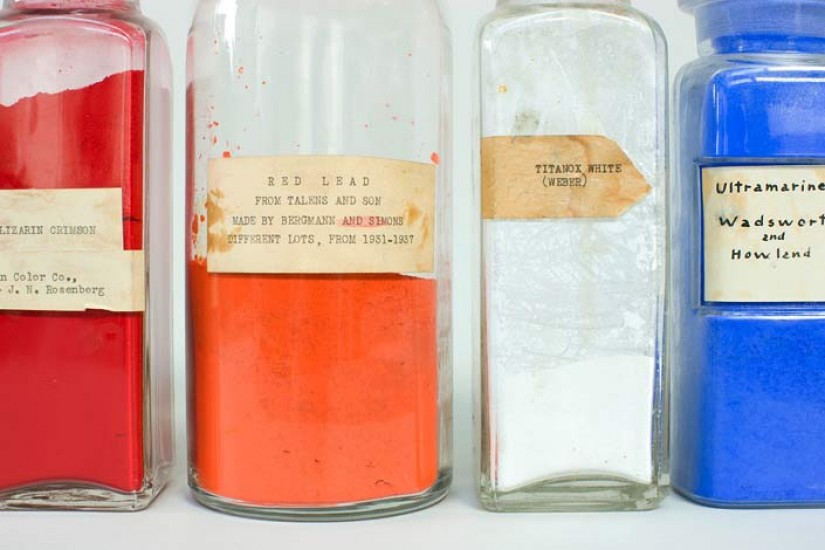In Rome, the twenty-six-year-old Forbes bought his first Italian painting: a half-ruined, flaking altarpiece attributed to Girolamo di Benvenuto di Giovanni del Guasta—the first of many acquisitions that he made with the intention of lending them to his alma mater. Aware that Yankee buyers in Europe were being treated as easy marks, Forbes saw that, if he was to avoid being swindled, he needed to educate himself in the material construction of Old Master paintings. The claims of art and science that had shaped Forbes’s education seemed to converge. To experience the power of great painting and the romance of the original art work, as Ruskin passionately argued, the viewer must be able to recover, even to imaginatively reënact, the artist’s moment of creation. For Forbes, the varnish intended to preserve works of art had trapped them beneath a yellowing skin. But what lay beneath, exactly? And how to recover a painting’s innocence without corrupting it further?
Modern archeology, with its fastidious excavations, seemed to offer a promising model. There were also Victorian manuals on the material composition of pigments—including “The Chemistry of Paints and Painting,” by Arthur Herbert Church, one of the first scientists to hold a position at the Royal Academy of Arts, in London. In 1928, as the director of the Fogg, Forbes invited a Harvard chemistry professor, Rutherford John Gettens, to create and run a lab in its new building. Gettens’s legacy is a cabinet, near the pigment collection, that contains thousands of slides, each showing how the shade of a paint might age naturally depending on its binding medium: egg yolk, egg white, the whole egg, oils.
For Forbes, the precondition for understanding an art work lay in identifying and analyzing the materials from which it was created. In addition to collecting pigments, Forbes planted madder in his garden at Gerry’s Landing, on the Charles River, and taught the lab section of his courses at home, where students could brush gesso and lime on an assigned patch of wall or, using pigments ground at M.I.T., take a stab at Boston fresco. In pursuit of the authentic, he had resins sent from Singapore and Indonesia, and Japanese woodblock colors from his brother William, the American Ambassador to Japan in the early nineteen-thirties. Forbes set aside a small collection of these pigments in a cabinet for his students to inspect.
